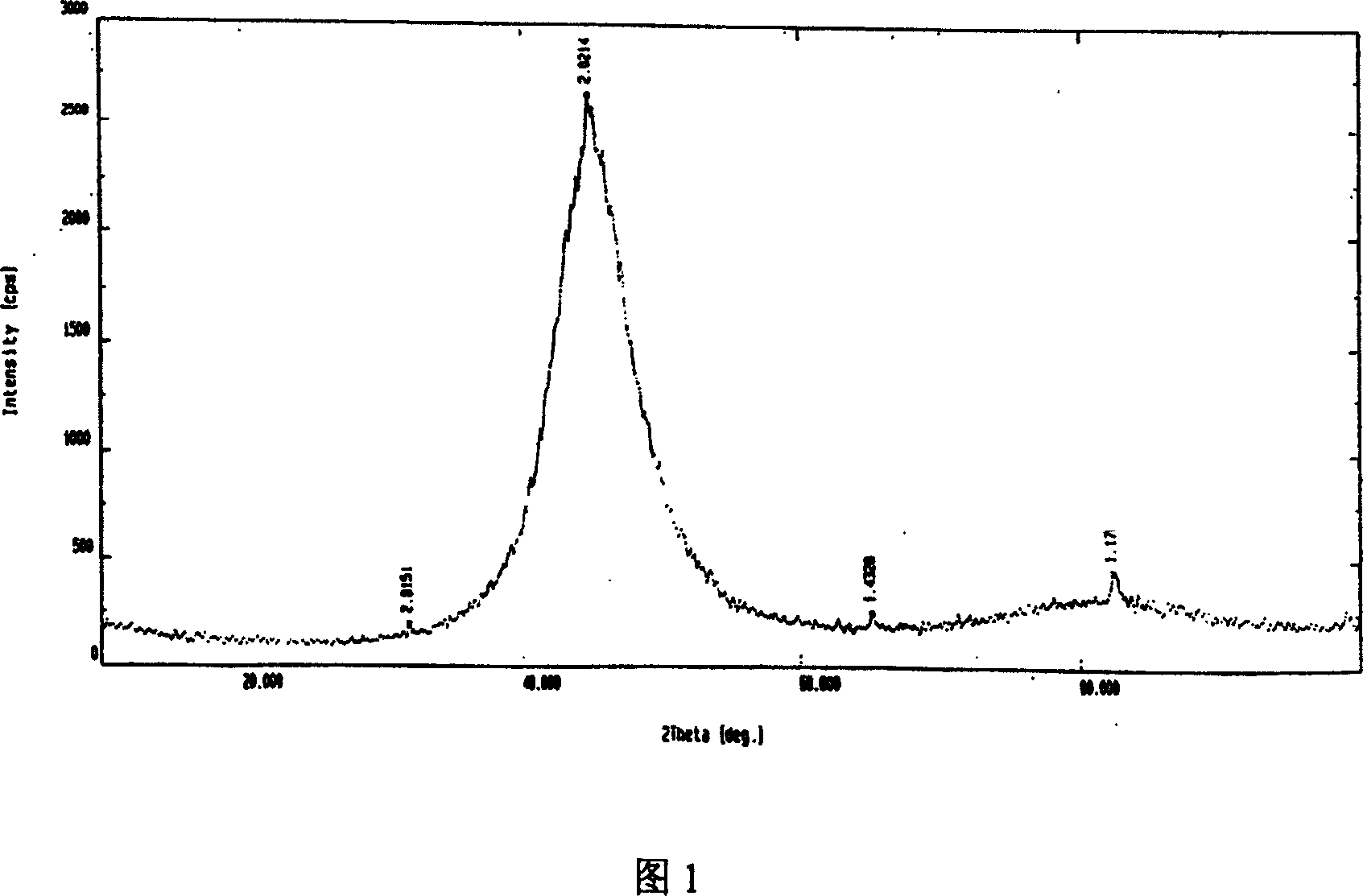Method for chemical plating nickel phosphor alloy
A technology for electroless nickel phosphorus and alloy plating, applied in the field of chemical surface treatment of materials, can solve problems such as affecting the quality of the coating, low purity of nickel hypophosphite, and inability to completely eliminate it, and achieves improved performance, increased plating speed, and increased plating bath life. Effect
- Summary
- Abstract
- Description
- Claims
- Application Information
AI Technical Summary
Problems solved by technology
Method used
Image
Examples
example 1
[0040] First, a mixed solution of nickel hypophosphite and hypophosphorous acid is prepared by electrolysis. See the application 'method for preparing nickel hypophosphite by electrolysis' on the same date.
[0041] The electrolysis adopts six-chamber electrodialysis tank, the anode material is nickel plate, and the electrode area is 40cm 2 , The cathode is a stainless steel electrode. Anion and cation exchange membranes were purchased from Shanghai Chemical Plant, and the membrane area used in electrolysis was 70cm 2 . The solution volume of each chamber of the six-chamber electrodialysis cell is 450mL. The initial solution of the anode chamber before electrolysis is 10g / L sulfuric acid, the raw material chamber is 400g / L sodium hypophosphite, the cathode chamber and its adjacent buffer chamber are both 10g / L sodium hydroxide, and the product chamber and its adjacent buffer chamber are both 10g / L nickel hypophosphite.
[0042] Working voltage is 10~15V
[0043] Table 1 ...
example 2
[0047] Prepare 1 liter of plating solution with the above-mentioned nickel hypophosphite and hypophosphorous acid mixed solution, the plating solution composition comprises: nickel ion (Ni 2+ )6g / L, hypophosphite ion (H 2 PO 2 - ) 21g / L, sodium citrate 45g / L, sodium gluconate 20g / L, acetic acid 14ml / L, trace amount of lead (2-3ppm) (lead acetate). The concentrations of nickel ions and hypophosphite ions in the supplement solution are 36g / L and 126g / L respectively. Put the plating solution into a 2-liter glass plating tank, control the temperature of the plating bath at 87-90° C. with a constant temperature water bath, and adjust the pH of the plating bath to 5.5 with ammonia water. The treated four steel plates (50mm×30mm×1.20mm) were immersed in the plating bath, and the plated parts were taken out after 1 hour. After cleaning with distilled water, the thicknesses of the coatings were measured to be 16um, 17um, 18um and 18um respectively. It can be seen by the naked eye t...
example 3
[0055] Prepare new plating solution, do not contain sodium gluconate, other experimental conditions are identical with example 2. After half an hour of plating, it will be found that the oxidation-reduction reaction begins to occur in the plating bath, and a small area of plating is formed at the bottom of the glass beaker, and the stability of the plating bath is reduced. After one hour, the plated parts were taken out, and after cleaning with distilled water, the thicknesses of the measured coatings were 9um, 7um, 8um and 6um respectively. Visually observe the surface of the coating to be dark, poor in uniformity and compactness, and have obvious pinholes.
PUM
| Property | Measurement | Unit |
|---|---|---|
| concentration | aaaaa | aaaaa |
Abstract
Description
Claims
Application Information
 Login to View More
Login to View More - R&D
- Intellectual Property
- Life Sciences
- Materials
- Tech Scout
- Unparalleled Data Quality
- Higher Quality Content
- 60% Fewer Hallucinations
Browse by: Latest US Patents, China's latest patents, Technical Efficacy Thesaurus, Application Domain, Technology Topic, Popular Technical Reports.
© 2025 PatSnap. All rights reserved.Legal|Privacy policy|Modern Slavery Act Transparency Statement|Sitemap|About US| Contact US: help@patsnap.com


